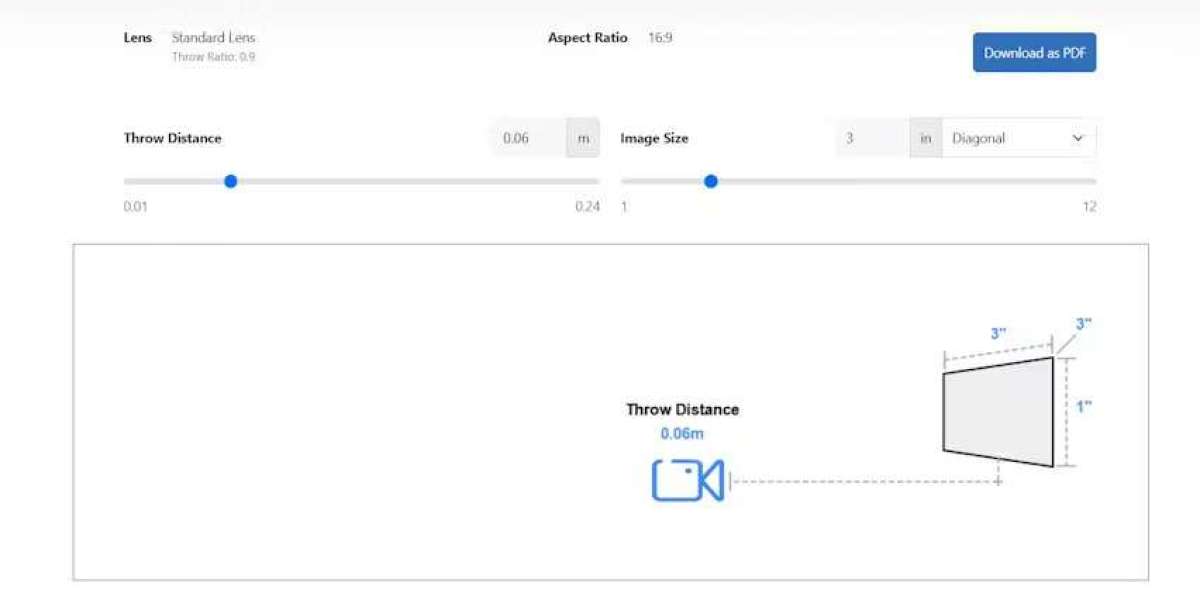Outdoor weddings are a magical way to celebrate love, offering a picturesque setting for exchanging vows, enjoying entertainment, and sharing memories with friends and family. In addition to décor, lighting, and sound, visual displays play a significant role in creating a memorable experience. Whether projecting live footage of the ceremony, slideshows of the couple’s journey, or videos for reception entertainment, selecting the right projector screen size is essential for ensuring that every guest can see and enjoy the visuals clearly. In this blog, we will provide a comprehensive guide to choosing the ideal projector screen size for outdoor weddings, taking into account audience size, viewing distance, and environmental factors.
Why Projector Screen Size Matters at Outdoor Weddings
Outdoor weddings often involve large open spaces, varying seating arrangements, and environmental challenges such as ambient light. Choosing the correct projector screen size ensures that visuals are visible to all attendees, from front row seats to the back of the garden. A screen that is too small can make details difficult to see, while a screen that is too large may overwhelm the space or reduce image brightness if the projector cannot handle the size.
The ideal projector screen size balances clarity, visibility, and aesthetic appeal, contributing to a seamless and elegant wedding experience.
Key Factors to Consider
Several factors influence the selection of projector screen size for outdoor weddings:
1. Audience Size and Seating Arrangement
The number of guests and their seating layout are critical in determining the right screen size. Outdoor weddings often feature rows of chairs, lounge areas, or scattered seating across lawns or terraces.
Small Weddings (up to 50 guests): Screens between 100 and 120 inches diagonal are typically sufficient.
Medium Weddings (50 to 150 guests): Screens between 120 and 150 inches diagonal ensure visibility for attendees at the back.
Large Weddings (150 guests and above): Screens 150 inches or larger may be necessary for maximum visibility, especially if the space is wide or elongated.
Seating distance from the screen should ideally be 1.5 to 2.5 times the diagonal size of the screen to maintain clarity and comfortable viewing.
2. Ambient Light Conditions
Outdoor weddings often take place during the late afternoon or evening, but ambient light from the sun, garden lights, or nearby buildings can affect the projected image. Brighter projectors or screens with reflective or ambient light rejecting surfaces are recommended for larger screens or areas with higher light levels. For evening weddings in dimmer settings, slightly smaller screens may suffice without compromising visibility.
3. Projector Resolution and Brightness
The projector’s resolution and brightness determine how well it can handle larger screens. High resolution projectors, such as Full HD or 4K, allow for larger screens without losing image clarity. Brightness is measured in lumens, and outdoor wedding setups often require 3000 lumens or more to maintain vivid and clear images. Choosing a projector that matches the screen size ensures that every guest sees crisp visuals.
4. Screen Type and Material
Outdoor projector screens come in a variety of types, including inflatable screens, foldable frame screens, and portable pull-up screens. The choice of screen affects both the quality of the projected image and the setup process:
Inflatable Screens: Portable and ideal for temporary outdoor setups. They are great for creating a cinematic experience but require secure anchoring.
Foldable Frame Screens: Provide a flat, high quality surface for clearer images. Suitable for more formal setups.
Retractable or Portable Screens: Flexible and easy to store, ideal for weddings where space or setup time is limited.
Screen material also affects image quality. Smooth matte surfaces provide sharp visuals, while ambient light rejecting materials help maintain brightness in brighter settings.
Recommended Projector Screen Sizes for Outdoor Weddings
The best projector screen size depends on guest count, seating layout, and viewing distance:
100 to 120 Inch Screens: Ideal for small weddings with up to 50 guests. Ensures all attendees can see the visuals without overpowering the space.
120 to 150 Inch Screens: Perfect for medium weddings with 50 to 150 guests. Provides clear visibility from the back rows and creates a cinematic experience.
150 Inches and Above: Suitable for large weddings or expansive outdoor spaces. Ensures maximum visibility for all guests, but requires a high lumen projector to maintain brightness and clarity.
Practical Tips for Outdoor Wedding Setup
Measure the Space: Ensure that the screen fits comfortably in the outdoor area, leaving room for seating, decorations, and walkways.
Consider Seating Layout: Position the screen so that all guests have a clear line of sight. Avoid placing it too low or too high.
Match Projector to Screen: Ensure the projector’s resolution and brightness can handle the selected screen size without compromising quality.
Secure the Screen: Outdoor setups are subject to wind or uneven surfaces. Use stakes, ropes, or weighted bases to stabilize inflatable or frame screens.
Test Before the Event: Project sample slides or videos to ensure that the image is clear, well aligned, and properly sized for the audience.
Adjust for Ambient Light: If the wedding occurs during daylight, use higher brightness projectors or position the screen away from direct sunlight.
Benefits of Selecting the Right Screen Size
Enhanced Guest Experience: Ensures that all attendees can enjoy videos, live feeds, and slideshows clearly.
Professional Presentation: A well sized screen contributes to a polished and elegant wedding environment.
Comfortable Viewing: Prevents eye strain and provides a balanced visual experience for guests at varying distances.
Optimized Investment: Matching projector and screen ensures the best performance, prolonging the lifespan of equipment.
Conclusion
Choosing the right projector screen size is essential for creating memorable outdoor weddings. Small weddings benefit from 100 to 120 inch screens, medium weddings from 120 to 150 inches, and large weddings may require 150 inches or more for maximum visibility.
By considering audience size, seating layout, ambient light, projector capabilities, and screen type, you can select a projector screen size that ensures every guest enjoys clear, immersive visuals. Proper planning and setup transform outdoor weddings into cinematic experiences, making the event unforgettable for both the couple and their guests.
With the right projector screen size, projectors, and setup strategy, outdoor weddings can seamlessly combine elegance, entertainment, and functionality, creating a magical and visually stunning celebration.













